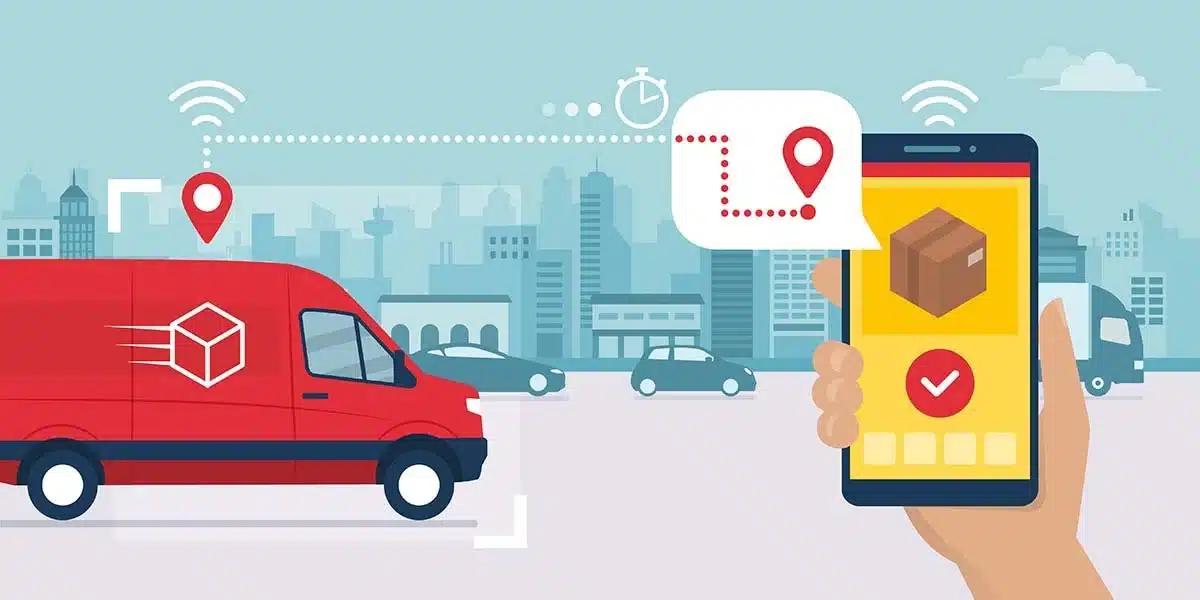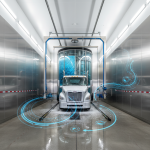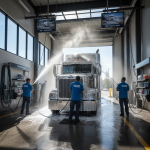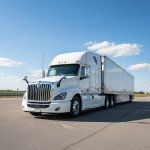In today’s fast-paced and ever-evolving world, the logistics industry is constantly facing new challenges. One of the most significant disruptions in recent years has been the rise of last mile delivery and its impact on supply chain efficiency. Last mile delivery refers to the final leg of the delivery process, from the transportation hub to the end destination, which is often the customer’s doorstep. This crucial stage of the supply chain is where customer satisfaction is won or lost, making it a top priority for businesses operating in the e-commerce sector. By revolutionizing the last mile delivery process, companies can significantly enhance their supply chain efficiency, improve customer experience, and gain a competitive edge in the market. In this article, we will explore the transformative effects of last mile delivery on the logistics industry and how businesses can leverage this trend to stay ahead of the game. So, buckle up and get ready to dive into the world of last mile delivery and its incredible impact on supply chain efficiency.
The importance of last mile delivery in supply chain management
Last mile delivery is often considered the most critical aspect of the supply chain. It is the final step in the delivery process, where products are transported from the distribution center to the end consumer. This stage has a direct impact on customer satisfaction and can determine whether a customer becomes a loyal advocate or a detractor. In today’s age of instant gratification, customers expect fast and reliable delivery. Businesses that can meet these expectations gain a competitive advantage and build strong brand loyalty.
However, last mile delivery is not without its challenges. It is often the most expensive and time-consuming part of the supply chain. Factors such as traffic congestion, unpredictable weather conditions, and the need for specialized handling can complicate the process. Additionally, the increasing demand for same-day and next-day delivery has put additional pressure on logistics providers to optimize their last mile operations.
To overcome these challenges, companies are turning to innovative technologies and strategies to streamline their last mile delivery processes. Let’s explore some of these innovations in the next section.
Challenges in last mile delivery
The last mile delivery stage presents several unique challenges that businesses must address to ensure efficient operations. One of the primary challenges is optimizing routes and minimizing travel distances. With multiple deliveries to be made within a limited timeframe, it becomes essential to plan routes that are both time and cost-effective. This requires sophisticated route optimization software that takes into account various factors such as traffic conditions, delivery windows, and vehicle capacity.
Another significant challenge is the management of customer expectations. Customers today demand real-time visibility into their deliveries and expect accurate and up-to-date tracking information. Providing this level of transparency requires robust tracking systems and effective communication channels. Failure to meet these expectations can result in customer dissatisfaction and negative reviews, which can have a detrimental impact on a company’s reputation.
Furthermore, the last mile delivery stage often involves the need for specialized handling, such as fragile or perishable items. Ensuring the safe and timely delivery of these goods requires trained personnel and appropriate equipment. Logistics providers must invest in training their delivery personnel to handle different types of products and equip them with the necessary tools to protect and transport items securely.
Despite these challenges, the last mile delivery stage also presents opportunities for innovation and optimization. In the following section, we will explore some of the technologies that are revolutionizing last mile delivery.
Innovations in last mile delivery technology
In recent years, technological advancements have played a significant role in revolutionizing last mile delivery. Companies are leveraging cutting-edge technologies to enhance efficiency, reduce costs, and improve customer experience. Here are some of the key innovations transforming the last mile delivery landscape:
1. Delivery Drones: Unmanned aerial vehicles, commonly known as drones, have gained popularity as a means of achieving faster and more flexible deliveries. Drones can navigate through traffic congestion and deliver packages directly to customers’ doorsteps, bypassing traditional road transportation. This technology has the potential to revolutionize last mile delivery, especially in remote or hard-to-reach areas.
2. Autonomous Vehicles: Self-driving vehicles are another game-changer in the last mile delivery sector. These vehicles use advanced sensors and artificial intelligence to navigate roads and deliver goods without human intervention. Autonomous vehicles offer several benefits, including reduced labor costs, improved safety, and increased delivery efficiency.
3. Smart Lockers: Smart lockers provide a convenient alternative to traditional home deliveries. Customers can pick up their packages from secure lockers located in easily accessible locations, such as shopping malls or train stations. This eliminates the need for multiple delivery attempts and ensures that packages are delivered on the first try, reducing costs and improving customer satisfaction.
4. Delivery Robots: Small delivery robots are becoming increasingly popular for last mile delivery in urban areas. These robots can navigate sidewalks and deliver packages directly to customers’ doorsteps. They are equipped with advanced navigation systems and can handle multiple deliveries simultaneously, making them a cost-effective and efficient solution.
These are just a few examples of the innovative technologies transforming last mile delivery. The adoption of these technologies is expected to increase in the coming years, as businesses strive to stay ahead of the competition and meet the evolving demands of customers.
In the next section, we will explore the benefits of efficient last mile delivery and how businesses can optimize their processes.
Benefits of efficient last mile delivery
Efficient last mile delivery offers numerous benefits for both businesses and customers. Let’s take a closer look at some of these advantages:
1. Improved Customer Experience: Fast and reliable last mile delivery is essential for providing a positive customer experience. Customers appreciate timely deliveries and real-time tracking updates, as it allows them to plan and receive their packages without delays. By meeting and exceeding customer expectations, businesses can build strong brand loyalty and gain a competitive edge.
2. Reduced Costs: Optimizing last mile delivery processes can lead to significant cost savings for businesses. Efficient route planning, automated dispatching, and real-time tracking can help minimize fuel expenses, vehicle maintenance costs, and labor costs. By eliminating unnecessary mileage and optimizing delivery schedules, businesses can operate more efficiently and reduce overall operational expenses.
3. Faster Deliveries: The rise of same-day and next-day delivery expectations has put pressure on businesses to optimize their last mile operations. By leveraging innovative technologies, businesses can achieve faster and more efficient deliveries, meeting the growing demand for speedy service. This not only improves customer satisfaction but also allows businesses to gain a competitive advantage in the market.
4. Reduced Environmental Impact: Efficient last mile delivery can also contribute to sustainability efforts. By optimizing routes and consolidating deliveries, businesses can reduce carbon emissions and minimize their environmental footprint. Additionally, the adoption of electric vehicles or alternative fuel options for last mile delivery can further reduce greenhouse gas emissions.
These benefits highlight the importance of efficient last mile delivery in supply chain management. In the next section, we will explore strategies that businesses can implement to optimize their last mile operations.
Strategies for optimizing last mile delivery
To achieve efficient last mile delivery, businesses must adopt a strategic approach and implement the right tools and processes. Here are some strategies that can help optimize last mile operations:
1. Route Optimization: Implementing route optimization software can help businesses plan the most efficient routes, taking into account factors such as traffic conditions, delivery windows, and vehicle capacity. This ensures that drivers take the shortest and fastest routes, minimizing travel distances and reducing fuel consumption.
2. Real-Time Tracking: Providing customers with real-time tracking updates allows them to stay informed about the status of their deliveries. This not only improves customer experience but also reduces the number of inquiries and customer support calls. By integrating tracking systems into their operations, businesses can enhance transparency and build trust with their customers.
3. Collaborative Delivery Models: Collaborative delivery models involve partnering with local businesses or independent contractors to handle last mile deliveries. This allows businesses to leverage existing delivery networks and resources, reducing costs and improving delivery speed. Collaborative models are particularly beneficial for businesses operating in urban areas with high delivery volumes.
4. Warehouse Proximity: Locating warehouses closer to end consumers can significantly reduce last mile distances. By strategically positioning warehouses in key locations, businesses can minimize delivery times and costs. This approach is especially effective for businesses with high-density customer bases or those targeting specific geographic areas.
5. Flexibility and Adaptability: The ability to adapt to changing customer demands and market conditions is crucial for successful last mile delivery. Businesses should invest in scalable and flexible solutions that can accommodate fluctuations in delivery volumes and adjust to evolving customer expectations. This may involve partnering with third-party logistics providers or leveraging crowdsourced delivery networks during peak periods.
By implementing these strategies, businesses can optimize their last mile delivery operations, improve efficiency, and enhance customer satisfaction. In the following section, we will explore real-world case studies of companies that have successfully implemented innovative last mile delivery solutions.
Case studies of successful last mile delivery implementations
To further understand the impact of efficient last mile delivery, let’s examine some real-world case studies of companies that have successfully implemented innovative solutions:
1. Amazon Prime: Amazon’s Prime service offers fast and reliable last mile delivery, with options for same-day and next-day delivery. By investing in its own delivery network, including drones, delivery robots, and a fleet of vans, Amazon has been able to achieve faster deliveries and provide an exceptional customer experience. The company’s focus on continuous innovation and optimization has allowed it to revolutionize last mile delivery in the e-commerce industry.
2. UPS: UPS has implemented various strategies to optimize its last mile delivery operations. The company utilizes advanced route optimization software to plan the most efficient routes, minimizing travel distances and reducing fuel consumption. UPS has also incorporated alternative delivery options, such as access point lockers and local businesses, to offer customers more flexibility and convenience. These initiatives have improved efficiency, reduced costs, and enhanced customer satisfaction.
3. Zappos: Zappos, the online shoe and clothing retailer, has gained a reputation for exceptional customer service, including its last mile delivery operations. The company offers free shipping and provides customers with real-time tracking updates, ensuring transparency and peace of mind. Zappos also prioritizes customer satisfaction by allowing hassle-free returns and exchanges. These customer-centric strategies have helped Zappos establish a loyal customer base and differentiate itself from competitors.
These case studies demonstrate the significant impact that efficient last mile delivery can have on customer satisfaction, operational efficiency, and business success. As the logistics industry continues to evolve, it is essential for businesses to embrace innovation and leverage the latest technologies to stay ahead of the competition.
The future of last mile delivery
The future of last mile delivery is filled with exciting possibilities. As technology continues to advance, we can expect to see even more innovative solutions that revolutionize the way goods are delivered. Here are some trends that are shaping the future of last mile delivery:
1. Drone Delivery: Drone technology is rapidly evolving, and we can expect to see widespread adoption of delivery drones in the coming years. With improved battery life, increased payload capacity, and enhanced navigation systems, drones will become a viable option for last mile delivery, especially in remote or hard-to-reach areas.
2. Artificial Intelligence and Machine Learning: Artificial intelligence and machine learning algorithms can analyze vast amounts of data to optimize delivery routes, predict customer behavior, and improve overall operational efficiency. These technologies can help businesses make data-driven decisions and automate various aspects of the last mile delivery process.
3. Robotics: Robotics technology is advancing rapidly, and we can expect to see more sophisticated delivery robots in the future. These robots will be capable of handling a wide range of products, navigating complex environments, and interacting with customers. They will revolutionize last mile delivery, especially in densely populated urban areas.
4. Sustainable Delivery Solutions: With the growing focus on sustainability, businesses are exploring eco-friendly delivery options. Electric vehicles, alternative fuel options, and low-emission transportation methods will become more prevalent, reducing the environmental impact of last mile delivery.
5. Internet of Things (IoT): The Internet of Things is transforming various industries, and last mile delivery is no exception. IoT devices can provide real-time data on delivery status, monitor environmental conditions, and optimize inventory management. This connectivity enables businesses to track and manage deliveries more efficiently, improving overall supply chain visibility.
These trends indicate an exciting future for last mile delivery, with new technologies and strategies continually emerging. As businesses navigate this evolving landscape, it is crucial to stay informed and adapt to changing customer expectations and market dynamics.
Last mile delivery and sustainability
Efficient last mile delivery is not only essential for business success but also plays a vital role in sustainability efforts. The transportation sector is a significant contributor to greenhouse gas emissions, and optimizing last mile delivery can help reduce carbon footprints. Here are some ways in which last mile delivery can contribute to sustainability:
1. Route Optimization: By optimizing routes, businesses can minimize travel distances and reduce fuel consumption. This not only saves costs but also reduces carbon emissions. Route optimization software can take into account various factors such as traffic conditions, delivery windows, and vehicle capacity to plan the most efficient routes.
2. Eco-friendly Vehicles: Transitioning to electric vehicles or other alternative fuel options for last mile delivery can significantly reduce greenhouse gas emissions. Electric vehicles produce zero direct emissions and are becoming more viable and affordable options for businesses. Investing in a sustainable vehicle fleet can have a positive impact on the environment and help businesses meet their sustainability goals.
3. Consolidation and Collaboration: Consolidating deliveries and adopting collaborative delivery models can lead to fewer vehicles on the road and more efficient use of resources. By partnering with local businesses or leveraging crowdsourced delivery networks, businesses can reduce the number of individual deliveries and optimize delivery routes, resulting in a reduced environmental impact.
4. Packaging Optimization: Optimizing packaging can help reduce waste and lower transportation costs. Businesses can explore eco-friendly packaging materials and design packaging that maximizes space utilization, reducing the number of trips required for delivery. Additionally, implementing recycling programs and encouraging customers to recycle packaging materials can contribute to sustainability efforts.
By incorporating sustainable practices into their last mile delivery operations, businesses can make a positive impact on the environment while also reaping the benefits of enhanced efficiency and customer satisfaction.




